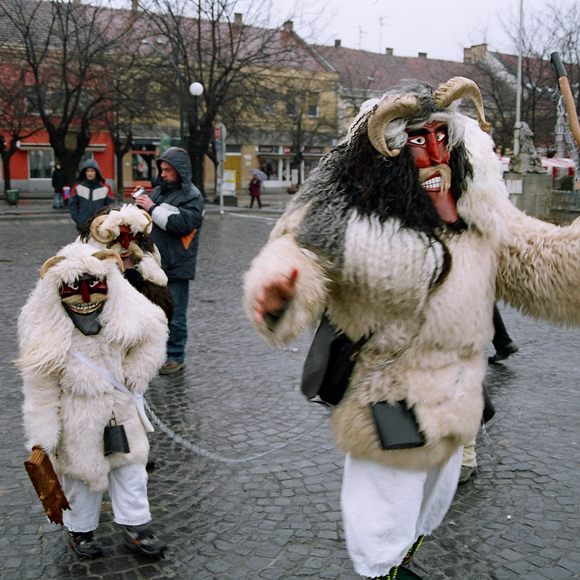Hungary, a country nestled in the heart of Europe, boasts a rich cultural tapestry woven with traditions that have withstood the test of time. One such remarkable celebration is the Busójárás Festival, an event that encapsulates the spirit of resilience, folklore, and communal joy. Let’s embark on a journey to explore the origins, significance, and the vibrant atmosphere that surrounds this unique Hungarian festivity.
Unveiling the Origins: A Dance of Rebels and Victory
The Busójárás Festival traces its roots back to the town of Mohács, situated along the Danube River. Its genesis is shrouded in a tale of triumph and rebellion against the Ottoman rule in the 16th century. Legend has it that after the Ottoman forces conquered Hungary, the locals, undeterred by the occupation, hatched a plan to regain their land. Disguised in frightening masks and traditional costumes, they launched a surprise attack, forcing the Ottomans to flee in terror.
Masquerading Traditions: The Iconic Busó Masks
Central to the Busójárás Festival are the iconic Busó masks, meticulously crafted with an artistic flair that reflects the fusion of Pagan and Christian elements. These wooden masks, adorned with fur and vivid colors, serve as a symbol of warding off evil spirits and embracing the arrival of spring. The mask-making process is a cherished tradition passed down through generations, a craft that involves both skill and creativity.
The Intricate Dance of Busó Characters
The festival’s allure extends beyond the masks, manifesting in the lively dance performances of the Busó characters. Each dance narrates a story, weaving together elements of folklore, history, and the celebration of life. The synchronized movements and vibrant costumes create a spectacle that captivates spectators, immersing them in the rhythmic heartbeat of Hungarian culture.
A Carnival of Culinary Delights: Indulging in Busójárás Gastronomy
No celebration in Hungary is complete without a feast, and the Busójárás Festival is no exception. The streets come alive with the aroma of traditional Hungarian delicacies, ranging from hearty stews to delectable pastries. Visitors can savor the flavors of lángos, a deep-fried flatbread topped with garlic, sour cream, and cheese, or relish the warmth of gulyás, a savory meat and vegetable stew. The culinary experience during the Busójárás Festival is a testament to the country’s gastronomic prowess.
Crafting Memories with Local Handicrafts
In addition to the culinary delights, the festival serves as a vibrant marketplace for local artisans to showcase their skills. Intricately crafted souvenirs, embroidered textiles, and handmade trinkets beckon visitors to take a piece of Hungarian craftsmanship home with them. The Busójárás Festival thus becomes not only a celebration of cultural heritage but also a platform for sustaining and promoting traditional crafts.
Embracing the Future: The Contemporary Significance of Busójárás
While deeply rooted in history, the Busójárás Festival has evolved to embrace modern elements, ensuring its relevance in contemporary times. The festivities now include concerts, art exhibitions, and workshops, providing a dynamic experience that caters to diverse tastes. The fusion of tradition and modernity exemplifies Hungary’s commitment to preserving its cultural identity while remaining open to innovation.
Frequently Asked Questions (FAQs)
1. What is the significance of the Busó masks?
The Busó masks hold cultural and spiritual significance, symbolizing the expulsion of winter and evil spirits. Crafted with precision, these masks are an integral part of the festival, embodying the resilience and creativity of the Hungarian people.
2. How can visitors participate in the Busójárás Festival?
Visitors can immerse themselves in the Busójárás Festival by attending the parades, enjoying traditional dances, and indulging in local delicacies. Many local businesses offer guided tours, providing insights into the festival’s history and cultural importance.
3. Is the Busójárás Festival celebrated only in Mohács?
While Mohács is the epicenter of the Busójárás Festival, celebrations can be witnessed in various parts of Hungary. The festival has transcended regional boundaries, attracting both locals and tourists eager to partake in this unique cultural extravaganza.
Embark on a cultural odyssey with the Busójárás Festival, where tradition, art, and jubilation converge to create an unforgettable experience. As Hungary opens its arms to the world, this festival stands as a testament to the nation’s enduring spirit and commitment to preserving its rich heritage.

